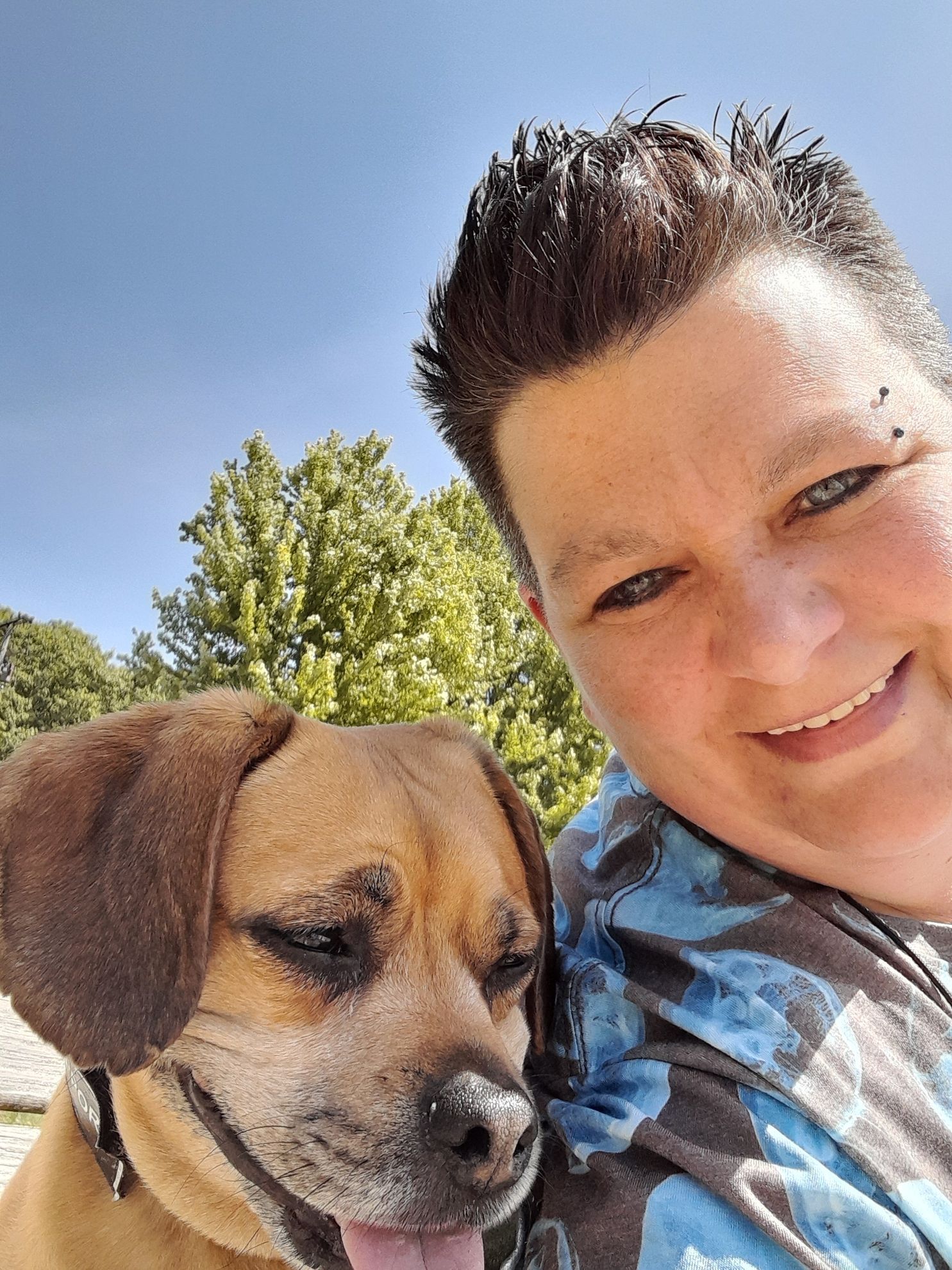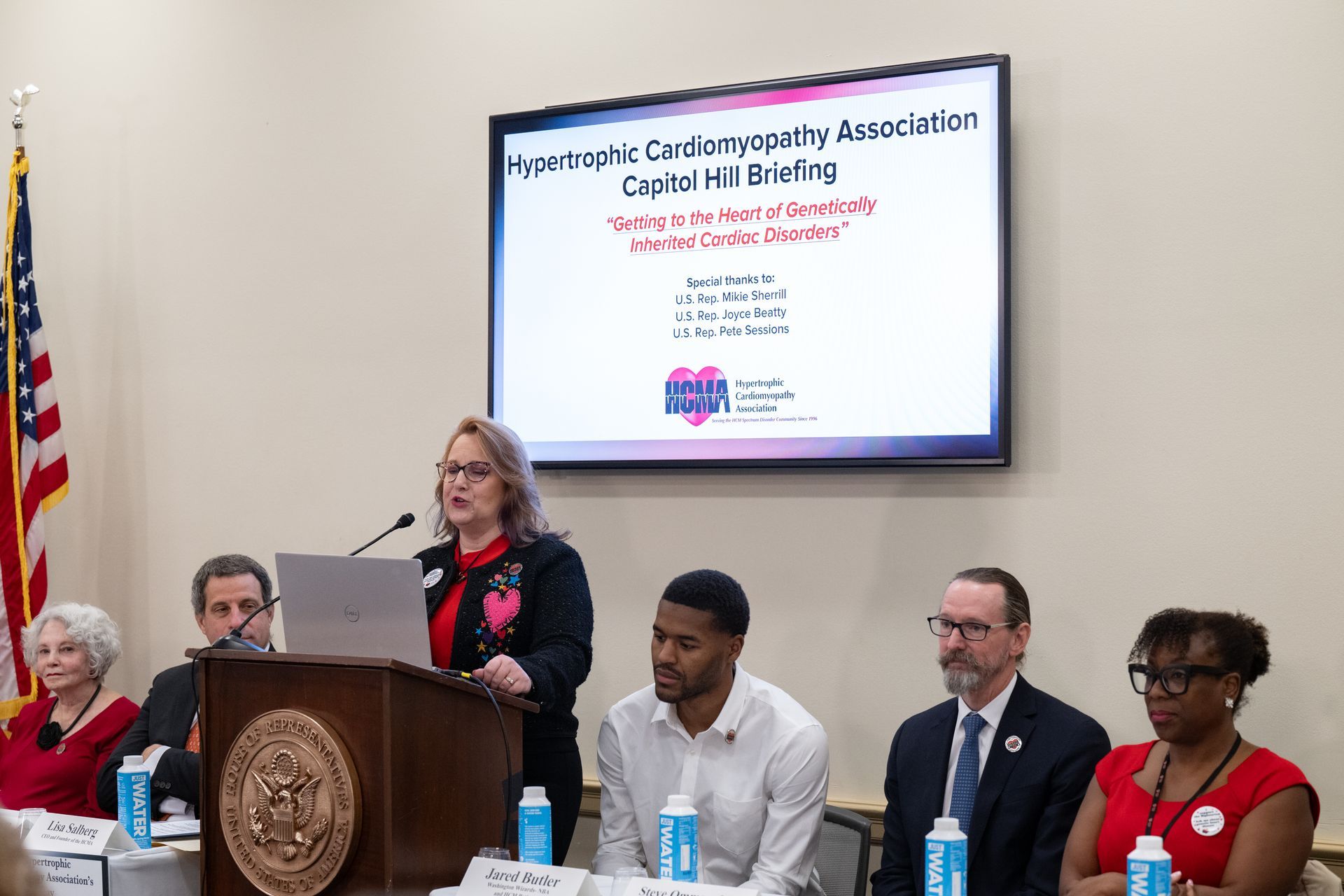Faces of HCM
Kim Walsh
“I told my doctor that I felt like a Koi Fish was flopping around in my chest. I knew something more serious was wrong. It felt like I was in an episode of some “mystery diagnosis show.”

Growing up, Kim Walsh was very athletic. She recalls that many times while doing physical activity, she would have difficulty keeping up with her peers because she would struggle with shortness of breath, lightheadedness, heart palpitations, and fatigue. Kim never thought her heart was the reason; she attributed it to being slightly overweight.
As time passed, Kim found herself adjusting her lifestyle around her symptoms in part because these symptoms triggered her to become extremely anxious. Like many with HCM, she hid her symptoms from her family, friends, and her partner until they finally became unbearable. Her doctor ran some tests, unfortunately not the right ones, and she was diagnosed with anxiety, which was only partially correct.
“I told my doctor that I felt like a Koi Fish was flopping around in my chest. I knew something more serious was wrong. It felt like I was in an episode of some “mystery diagnosis show.”
Kim’s doctor finally did an EKG, and the results were abnormal, so she was referred to a cardiologist. The cardiologist ran many tests (echocardiogram, stress echo, stress test, Holter monitor, MRI), and Kim was diagnosed with hypertrophic cardiomyopathy (HCM). Getting to diagnosis finally put all the pieces together. Sadly, it took living most of her life with symptoms until the age of 35, before she could finally begin to treat the underlying cause of her symptoms.
According to Kim, she is the first to be diagnosed with HCM in her family. However, there are family members with a variety of “heart issues” that still need to be evaluated to determine if they are connected to HCM.
After her diagnosis, Kim reached out to the Hypertrophic Cardiomyopathy Association (HCMA): “I needed knowledge and support because I felt I had just become a victim of something that would end my life.” With the help of the HCMA, Kim was connected with an HCMA-recognized Center of Excellence (COE) and started adjusting to her new “norm” after diagnosis. She said, “With the help of my COE team, I began the journey to find the right medications and dosages to manage my HCM. Some of the medications worked for a while, but then my symptoms would return with a vengeance, and it was time to adjust them again.”
Kim found out about a clinical trial for a new medication for HCM called mavacamten. When mavacamten, brand-name Camzyos, was approved by the FDA, she made the shared decision with her COE team to try it. “I thought, I’ve got nothing to lose and everything to gain. I was looking for options to avoid having surgery unless it was my only option to alleviate my symptoms.”
When asked about her experience taking Camzyos, Kim said, “I feel like I’m living a life I didn’t think was possible. I feel great! I’m actually enjoying cleaning my home. I can lift laundry baskets and walk long distances with my 4-year-old puggle, Marley. Camzyos has been a miracle drug for me. I don’t have to be a victim of this disease anymore. I took control of my HCM by researching and taking an educated chance.”
Kim is an active HCMA volunteer. She shared, “I’m now all about being an advocate. I took myself out of my comfort zone because I wanted to pay forward by volunteering. I’m grateful to the HCMA and the tools they provided me to help me manage my care.”
“If I could give one piece of advice, it would be not to ignore symptoms. If something isn’t feeling right, get it checked out. Don’t ignore it. I know it can be scary, but the alternatives are worse”.

 Translate
Translate